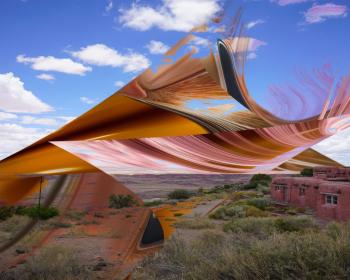
By Phoebe Farris (Powhatan-Pamunkey)
Artist Hock E Aye Vi Edgar Heap of Birds (Cheyenne/Arapaho) was the keynote speaker at Stockton University’s annual Arts and Culture Summit on April 4-5, 2025, an event that served as beginning preparation for the United States of America’s 250th anniversary next year. Before his address, Heap of Birds engaged with art students during a lecture and Q&A session at the Stockton University Art Gallery. He was also a participating artist in the university’s art exhibition, “Indigenous Approaches, Sustainable Futures”.
Heap of Birds is an internationally acclaimed Native artist who is also regarded nationally across Turtle Island. In 2020, he was elected to the American Academy of Arts and Sciences. His sculptures and prints are in the permanent collections of the Smithsonian Institution in Washington, D.C., the Whitney Museum of American Art in New York City, the Tate Modern in London, the Library of Congress, the Los Angeles County Museum of Art, and the British Museum in London, among other prestigious institutions. He has also exhibited at international festivals such as the 2007 Venice Biennale, Documenta in Kassel, Germany, the Whitney Biennial, and Art Basel Miami in 2017.
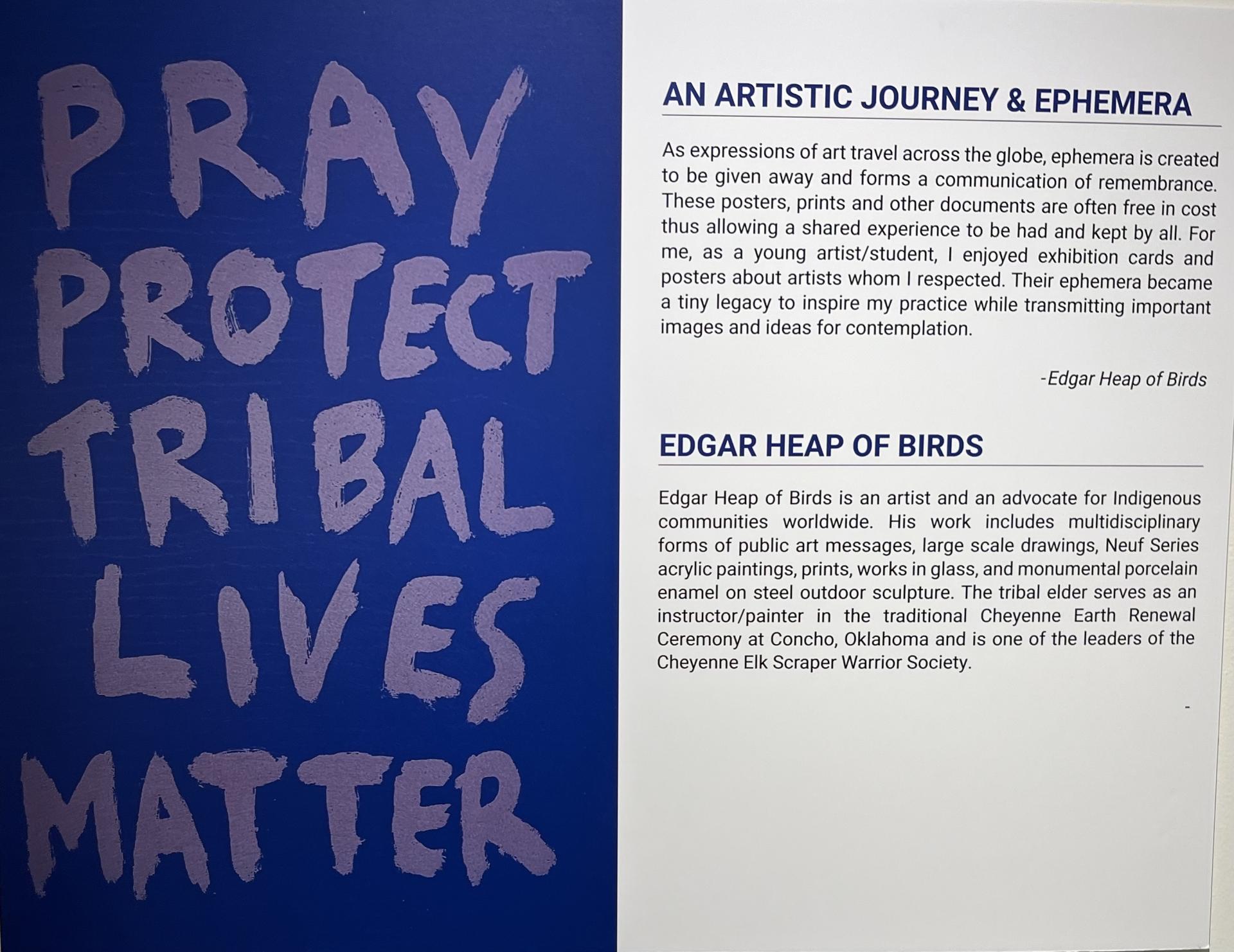
As a multidisciplinary artist, Heap of Birds engages with large-scale drawings, neuf series acrylic painting, printmaking, glass works, and the construction of outdoor steel sculptures made with porcelain enamel.
Heap of Birds remains committed to his traditional roots and to helping future generations of Native artists and activists. He serves as one of the leaders of the Cheyenne Elk Scraper Warrior Society and also as an instructor/painter in the traditional Earth Renewal Ceremony at Concho, Oklahoma.
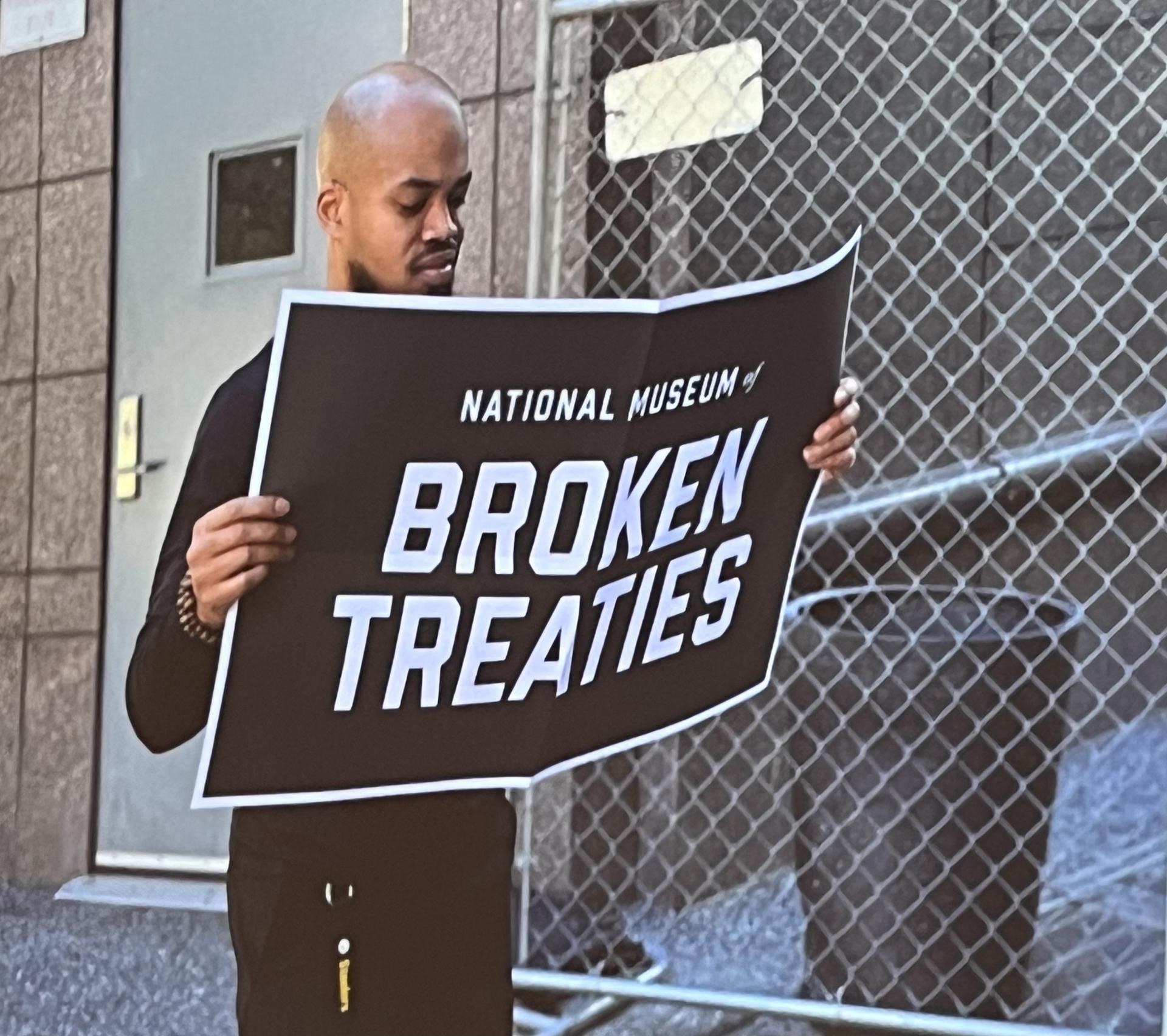
During his keynote address to representatives from New Jersey state cultural organizations, university faculty, local politicians, and fellow artists, and in his more informal presentation to students, Heap of Birds stressed the role of artists as advocates for social justice in their local communities and worldwide. A strong believer in collaborative residencies involving artists from diverse cultures, he spoke about his involvement with Indigenous artists from Australia, South Africa, and Zimbabwe and their shared experiences of colonization.
The prints, “Our Nation's Capitals” (2023, ink on rag paper) and “Indigenous Approaches, Sustainable Futures,” on display during the exhibit, highlight Tribal capitals and headquarters across North America such as Gila River, Concho Red Rock, Isleta White River, Grand Portage, Santa Catalina, and Round Valley Cherokee—names and locations that are not well known to much of the non-Native public. His use of natural materials such as dry bamboo leaves and grasses is a form of Indigenous arts advocacy.
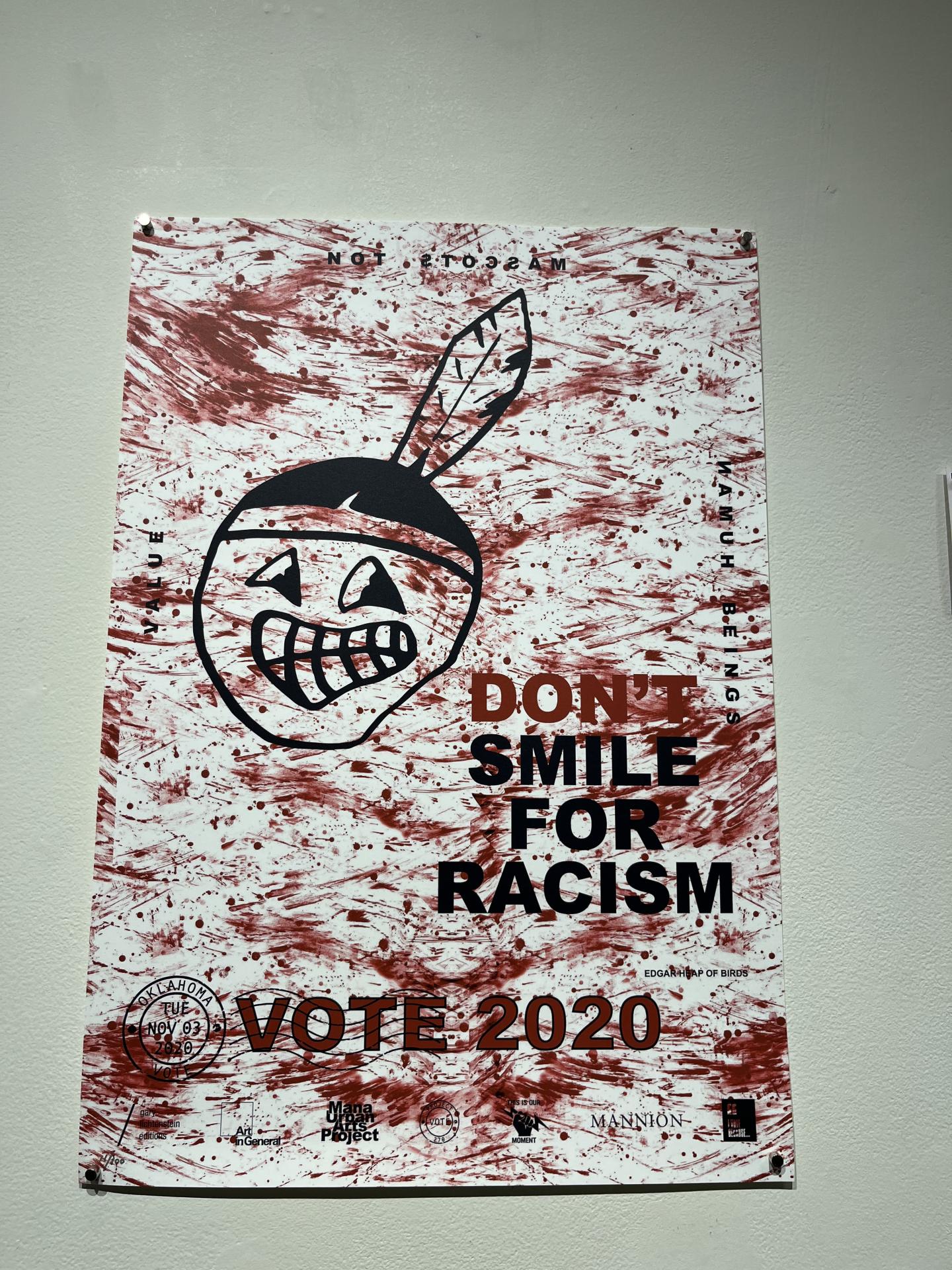
Heap of Birds encouraged the students he spoke with to be involved with their respective cultural communities, emphasizing that culture is not separate, not something just to be painted about. “You need that interaction,” he told them. “Be involved with your family. Visit grandma. If you don’t interact with your Native, African-American, Latino, or other cultures, how can your art reflect them?” He also encouraged engagement with the natural world, to travel, and be curious about the world. “Art is not an object. Art is an investigation,” he said.
Giving back to one’s community was emphasized in all of Heap of Birds’ interactions at Stockton University. Having earned his MFA at Temple University’s Tyler School of Art and Architecture in Philadelphia, he recently established a residency program there. The Edgar Heap of Birds Family Gallery, which supports Native artists in North America, will offer an artist’s residency every two years. This year’s resident artist is painter Norman Akers (Osage).
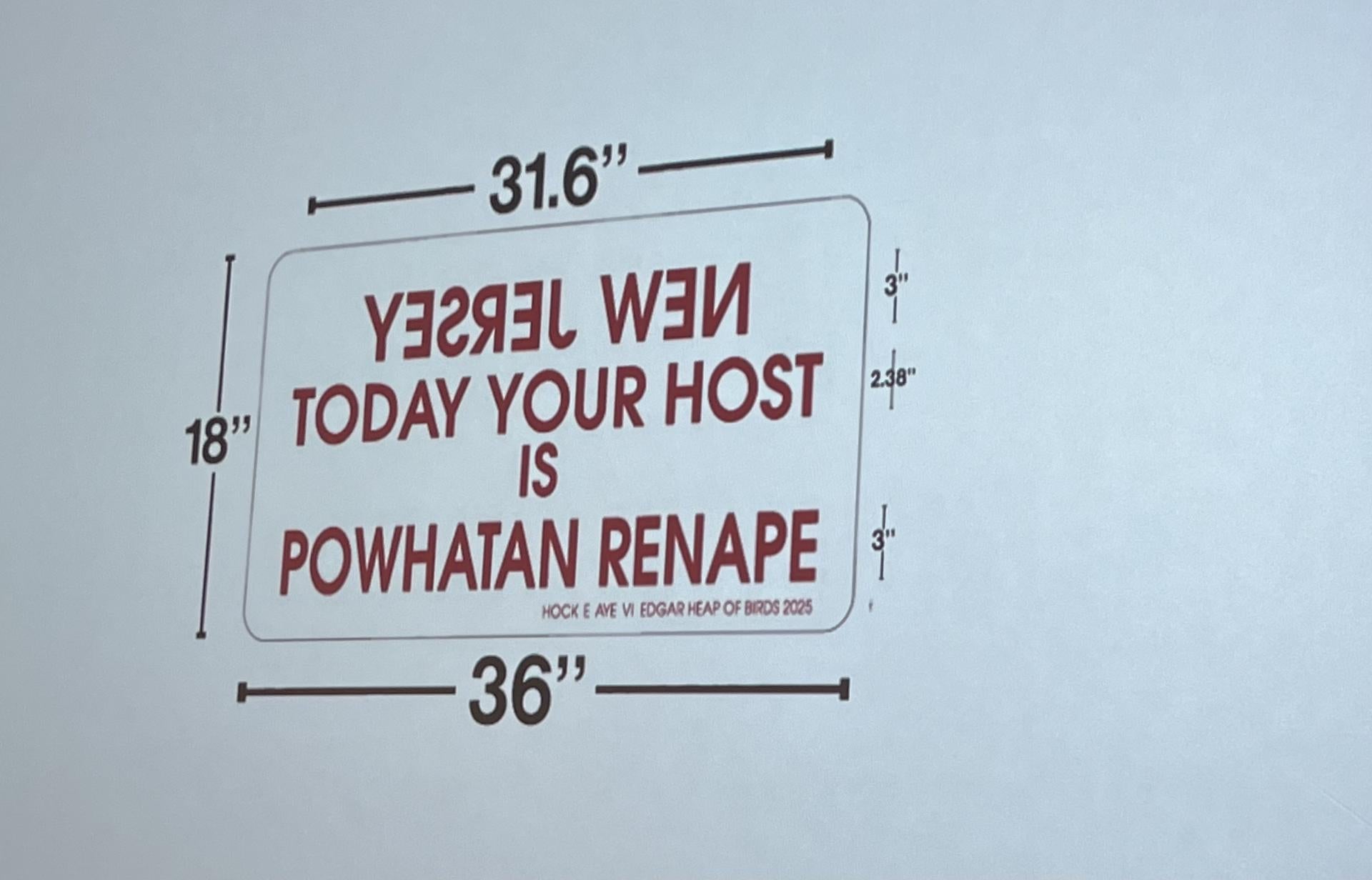
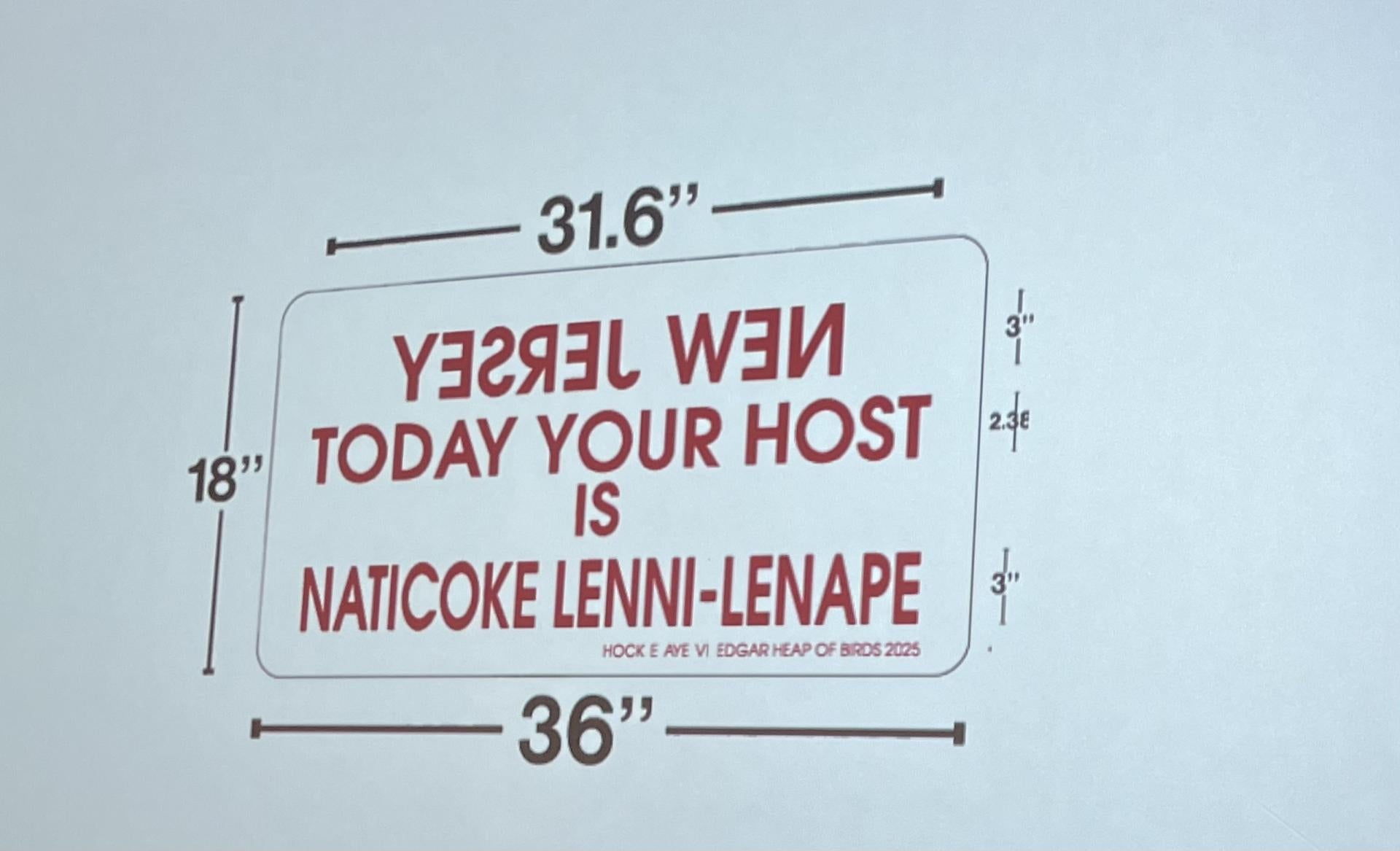
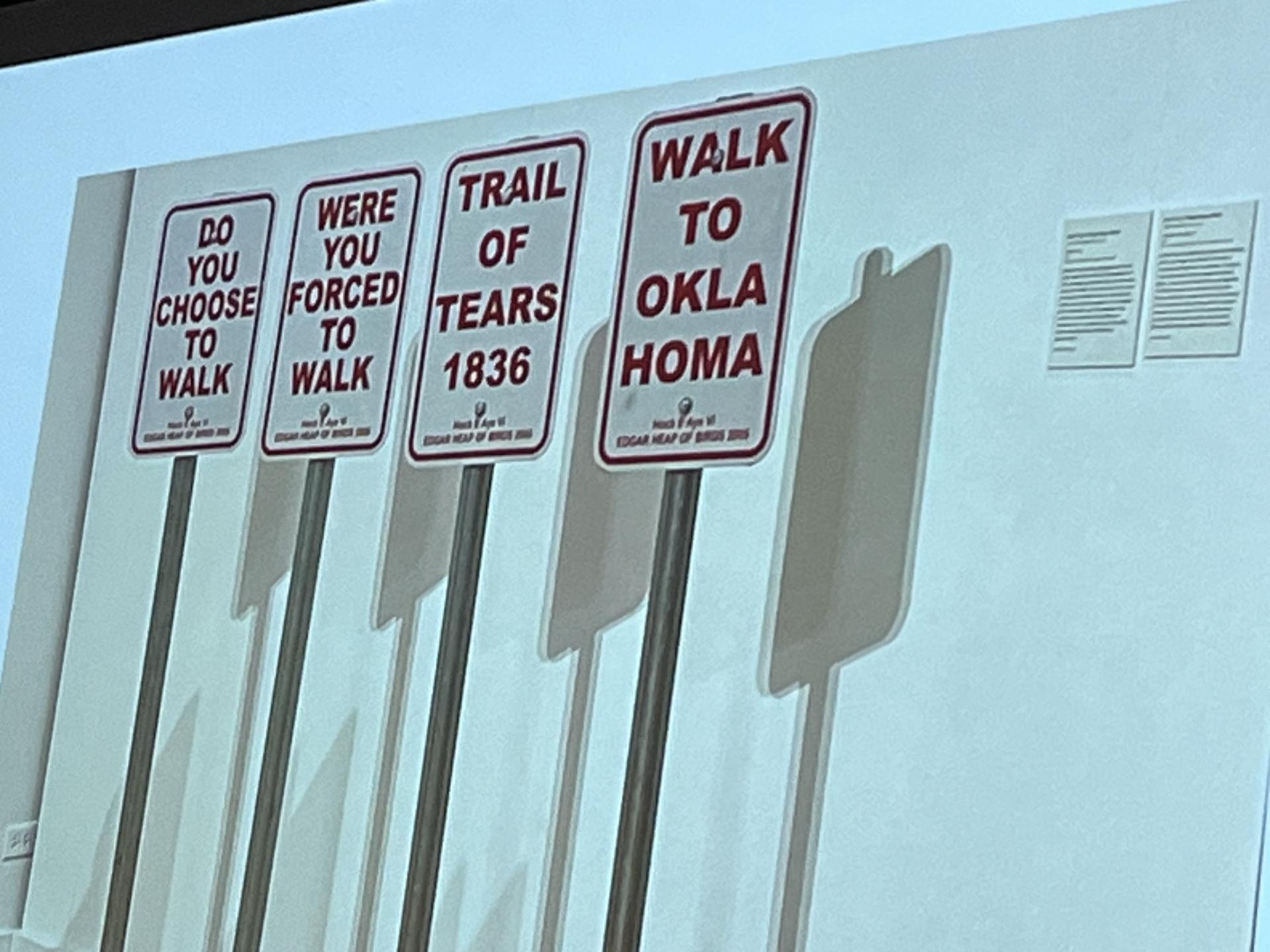
Heap of Birds has always been, and still is, consistent in honoring his ancestral roots. He often states that his Oklahoma ceremonies and connection with the Earth are important to him, while describing New York City and other urban areas as “places and spaces informative for my work.” In the 1980s, he interacted and collaborated with many renowned artists, including the late Ana Mendieta and Keith Haring, Peter Jemison (Tuscarora/Seneca), and David Hammons, an African-American artist based in New York. He cites the New York City jazz scene as a major inspiration, often concluding, “I go back and forth in spaces like New York, Rio, South Africa, Australia, but I return home. Home is very important.”
--Phoebe Mills Farris, Ph.D. (Powhatan-Pamunkey) is a Purdue University Professor emerita, photographer, and freelance art critic.
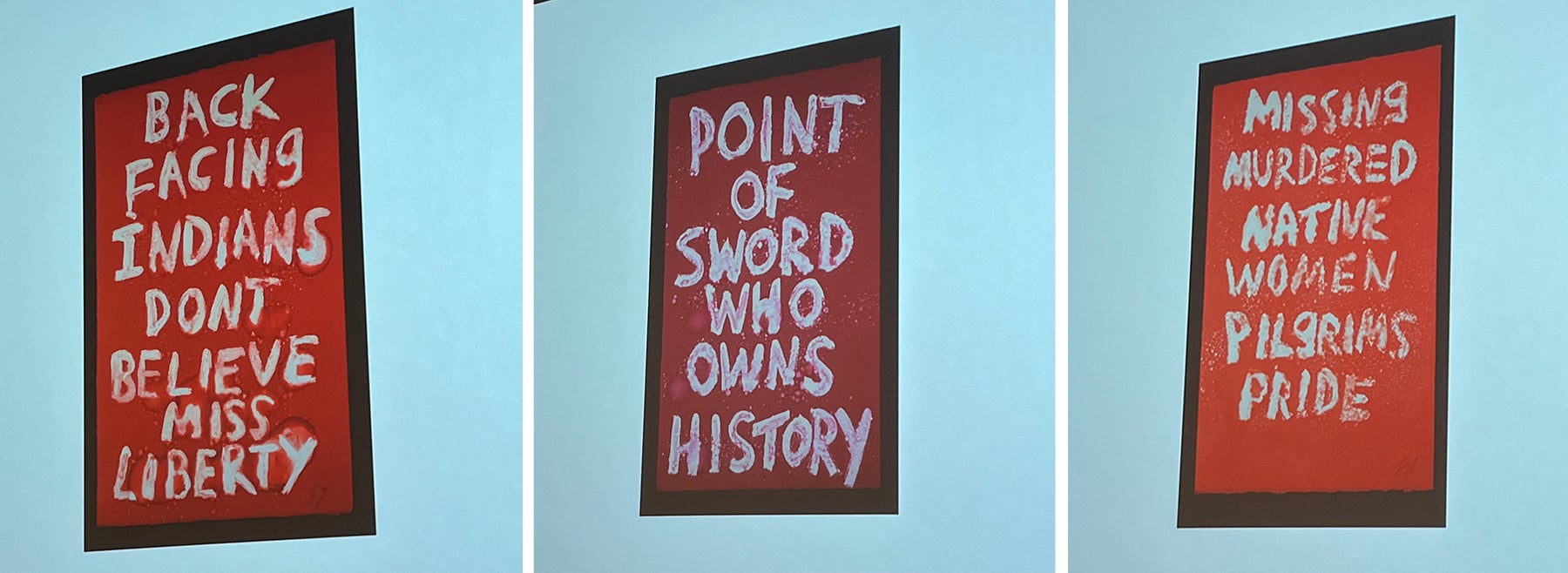
Top photo: Dr. Ian Marshall, Dean of Arts and Humanities at Stockton University, with Edgar Heap of Birds.
